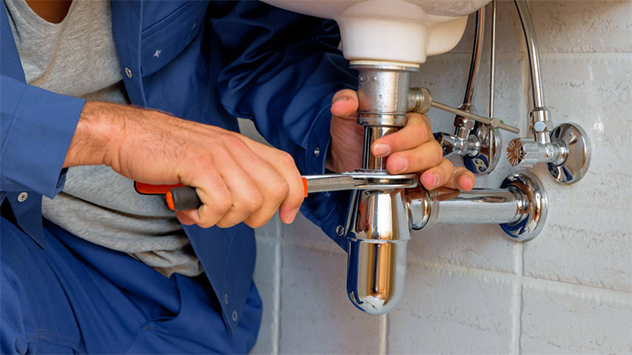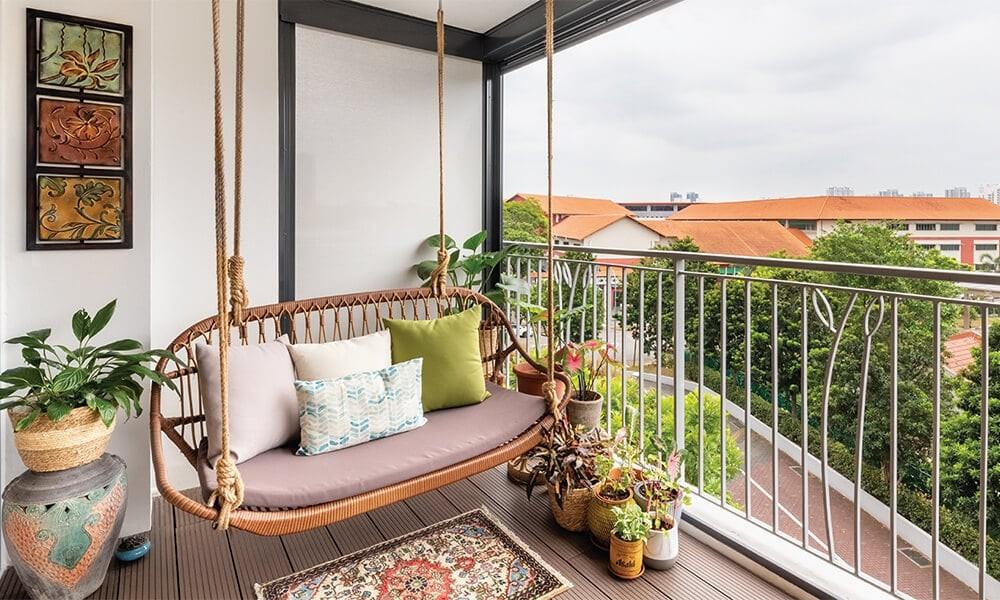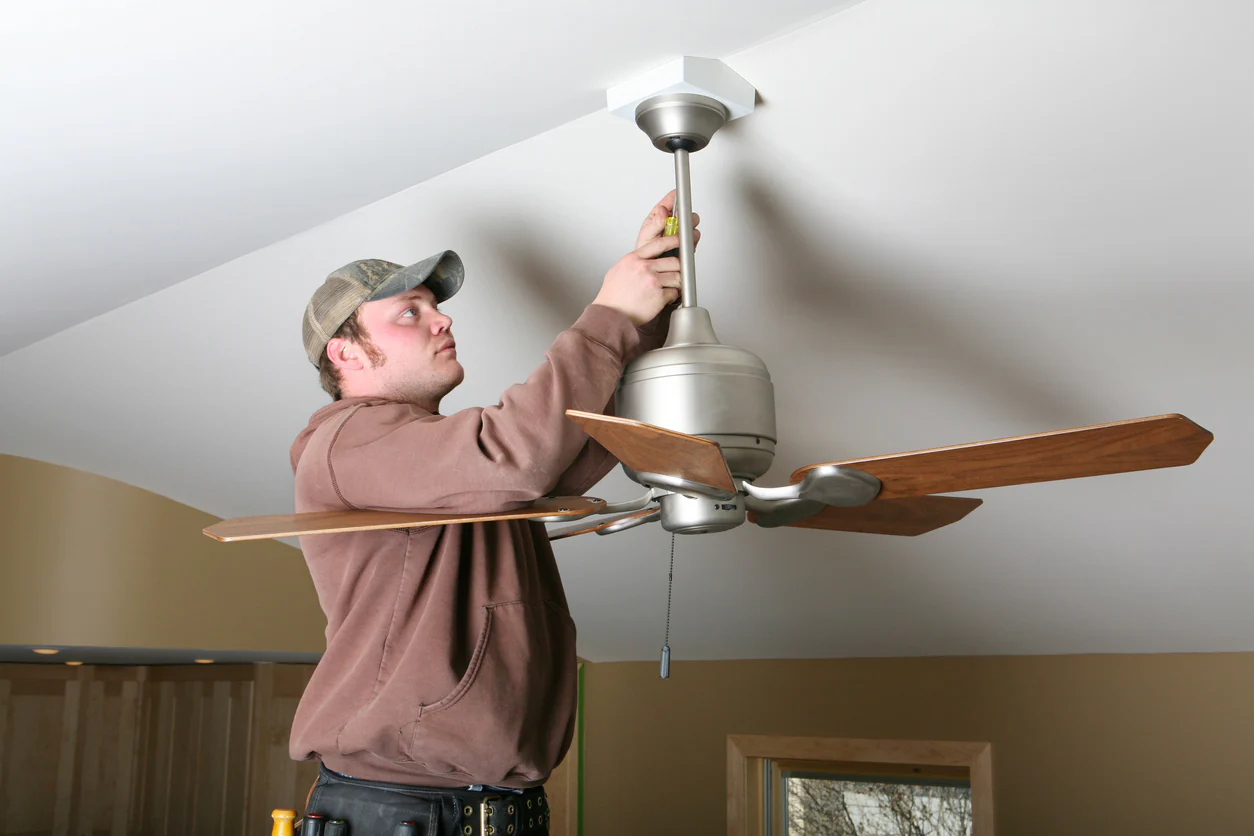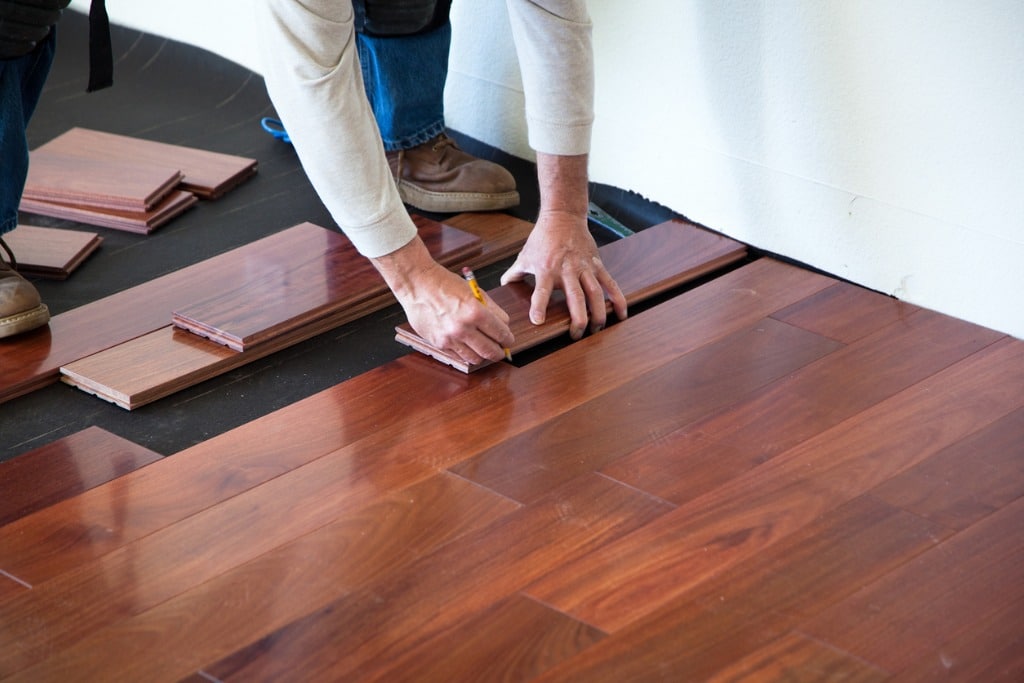Home Improvement
Common Plumbing Problems: DIY Fixes vs. Professional Help

Introduction
Understanding the right moments to try a do-it-yourself solution versus seeking professional help can help keep up with your plumbing maintenance to prevent costly repairs. Always prioritize safety and long-term solutions. A balanced approach to plumbing maintenance—incorporating both DIY and professional help—ensures the durability and efficiency of your home’s plumbing system, providing peace of mind and functional comfort for years to come.
Homeowners often deal with plumbing problems. From minor annoyances like dripping faucets to more severe problems such as sewage backups, understanding the scope of the issue can dictate the correct course of action. Understanding when you can manage a plumbing issue independently and when you need residential plumbing services can save you from further complications. This guide is designed to help you make that distinction. A well-maintained plumbing system ensures a comfortable living environment and adds to the overall value of your home. By grasping the nature of common plumbing problems, homeowners can make informed decisions about minor repairs and significant plumbing concerns that require professional expertise.
Clogged Drains and Toilets
Signs of a Clogged Drain/Toilet
One of the most prevalent plumbing issues is clogged drains and toilets, manifesting through several signs. Slow-draining sinks, standing water in bathtubs, and toilets that don’t flush properly indicate clogs. These signs can be observed early on, making addressing them easier before the situation escalates.
DIY Methods to Unclog
Simple tools like plungers and drain snakes can be highly effective when faced with a clog. Plungers pressure the clog through, while drain snakes can remove debris directly. Baking soda and vinegar mixtures can also be poured into drains to help dissolve minor clogs. Nevertheless, it is best to steer clear of chemical drain cleaners since they can potentially harm pipes.
When to Call a Professional
If DIY methods fail or multiple drains are clogged simultaneously, it might indicate a severe issue in the main sewer line, necessitating professional help. Professional plumbers, like hydro-jetters, have the equipment to clear stubborn clogs and diagnose underlying issues that DIY solutions can’t address.
Leaky Faucets and Pipes
Common Causes of Leaks
Leaky faucets and pipes are annoying and waste significant water over time. Common causes of leaks include wear and tear, corrosion, and loose connections. These issues can often be identified by visible drips, increased water bills, or mold growth in unexpected places.
Quick DIY Fixes vs. Complex Repairs
Replacing worn-out washers and tightening connections are simple DIY fixes that most homeowners can handle with essential tools. These are often quick, cost-effective solutions that can temporarily halt the leak. However, professional expertise is critical when dealing with complex issues like corroded pipes or hidden leaks to prevent extensive water damage and ensure a lasting solution.
Importance of Professional Assistance
Ignoring persistent leaks can lead to extensive water damage, weakened structural integrity of your home, and mold growth. Therefore, it’s crucial to address leaks promptly. For complex problems or leaks that can’t be traced easily, calling professionals can not only stop the leak but also prevent recurring issues that DIY fixes might not completely solve.
Low Water Pressure
Identifying Low Water Pressure Problems
Low water pressure can be frustrating and is often a symptom of other underlying issues. Weak water flow from faucets and showerheads, appliances that take longer to fill, and inconsistent water flow are tell-tale signs. Low water pressure can be isolated to one fixture or widespread throughout the home.
DIY Checks and Solutions
Inspecting and cleaning clogged aerators and showerheads can sometimes resolve the issue. Sediment build-up and mineral deposits can restrict water flow, which can be easily remedied with a thorough cleaning. Additionally, checking for leaks in the pipes and ensuring the main water valve is fully open are simple steps homeowners can take.
Expert Assessment Needed
If these simple fixes don’t work, the problem may be more complex, potentially involving issues in the plumbing system’s infrastructure or the municipal water supply. In these situations, it is essential to have a professional evaluation to identify and fix the root causes and get water pressure back to normal.
Running Toilets
Reasons for Running Toilets
Leaking toilets have the potential to waste numerous gallons of water daily. Common reasons include worn-out flapper valves, improper float height, and defective fill valves. These issues cause continuous water flow from the tank to the bowl without proper filling and shutting off.
Simple DIY Fixes
Replacing flapper valves and adjusting the float height are simple DIY tasks that can often resolve the issue. These components are inexpensive and can be found at any hardware store. Adjusting the fill valve settings also helps in some cases and usually doesn’t require specialized tools.
Need for Professional Intervention
If the problem persists despite these fixes, it could indicate more complex issues like unseen leaks or problems with the toilet’s overall mechanism. In such scenarios, it is best to consult with professionals who can identify and resolve any underlying issues to prevent water waste and ensure functional efficiency.
Water Heater Issues
Common Water Heater Problems
Inconsistent hot water, unusual noises, and leaks around the water heater are common problems that indicate a malfunctioning unit. Water heaters are complex appliances, and problems can arise from sediment build-up, faulty components, or even incorrect thermostat settings.
Basic Troubleshooting Tips
Checking the thermostat settings, flushing the tank to remove sediment, and inspecting the unit for visible leaks are potential DIY steps. Regular maintenance, like draining and cleaning the tank, also helps prolong the water heater’s life.
Professional Repair or Replacement
However, if problems persist, it’s essential to call a professional for repair or replacement. Proper knowledge and tools are essential for safe working with water heaters. Professionals can also help you decide if it’s time for a new unit, ensuring safety and efficiency.
Sewage System Backup
Signs of a Sewage Backup
Sewage backups are severe plumbing problems that manifest through unpleasant smells, multiple slow drains, gurgling sounds, and water backups in different fixtures. These signs often indicate blockage or damage in the main sewage line.
Immediate Actions
If you suspect a sewage backup, stop using water immediately and contact a professional plumber. Trying to fix a sewage backup yourself can expose you to hazardous waste and exacerbate the problem.
Professional Intervention Crucial
Only professionals can adequately diagnose and address the root cause of a sewage system backup, often involving extensive tools and expertise. This issue demands immediate attention to prevent health hazards and significant property damage.
Preventative Measures
Regular Maintenance Tips
Keeping up with routine maintenance is essential in preventing most plumbing problems. Simple practices, like periodically inspecting for leaks, ensuring that drains are kept clean and being cautious about what is put down the drain, can have a notable impact. It’s also beneficial to have a basic understanding of your plumbing system’s layout for quick assessments.
Installing Water Softeners
Due to hard water, mineral deposits may develop in pipes, causing potential blockages and reducing water pressure. Installing water softeners can prevent this and extend the lifespan of your plumbing system. It also benefits appliances like washing machines and dishwashers, which can suffer from limescale deposits over time.
Importance of Annual Inspections
Consider scheduling annual plumbing inspections to identify and rectify minor issues before they become significant problems. Professional inspections uncover hidden leaks, corrosion, and other potential unnoticed issues. This proactive approach saves money and headaches in the long run.

Home Improvement
Deck Perfection and Garden Glow: The Essential Guide to Screws, Lighting, and Drainage for Your Outdoor Retreat

As any homeowner knows, creating the perfect outdoor space is not only about the big design elements like landscaping and furniture – it’s the little details that really matter. When it comes to transforming your deck and garden into stylish and functional areas, three essentials stand out: decking screws, outdoor lighting, and drainage. In this comprehensive guide, we’re going to look at how these crucial components come together to create the ultimate outdoor retreat.
Building a Deck That Lasts with the Right Decking Screws
Constructing or renovating a deck is a significant investment, and one that you’d want to last through the erratic Aussie weather. The importance of using the right decking screws can’t be overstated. These humble fasteners are what keeps your deck together, ensuring stability, durability, and safety. High-quality decking screws are specifically designed to resist corrosion, withstand environmental changes, and secure the decking boards to the frame without the risk of popping up or causing splinters.
Choosing the right type of screw involves considering the material of your decking, the climate, and the overall look you aspire to achieve. Stainless steel screws, for instance, are ideal for their resistance to rust and their strength. Moreover, the right screws can blend seamlessly with your decking material, maintaining the aesthetic of your outdoor space.
Landscape Lighting to Enliven Your Garden
As the sun dips below the horizon, it’s outdoor lighting that breathes new life into your garden. Thoughtful lighting arrangements can emphasise garden features, enhance safety, and create a warm ambience for those balmy evenings spent under the stars. From path lights that guide your steps to spotlighting that accentuates your favourite tree, the range of outdoor lighting solutions is vast and varied.
The key to effective outdoor lighting is to strike a balance between style and function. Solar-powered options offer an eco-friendly choice that can also reduce electricity costs. LED lights are another popular choice due to their energy efficiency and long lifespan. No matter which type you choose, the right lighting can make your garden glow and give your outdoor space a magical flair.
Managing Water with Effective Drainage Solutions
Good drainage is critical to maintaining the beauty and usability of your outdoor retreat. Water pooling on your deck or in your garden can lead to a host of problems, including rot, mildew, and the destruction of plants. Implementing a proper drainage system will ensure that water is swiftly and effectively redirected away from structures and plantings.
Incorporating drainage solutions into your outdoor design doesn’t have to be an eyesore. Today’s options include discreet and decorative grates that blend with your garden’s look while preventing water damage and erosion. Moreover, adequate drainage protects your home’s foundation from potential water damage, making it a necessary investment for any homeowner.
Merging Style and Function
The beauty of a well-designed outdoor area is in its ability to merge style with function seamlessly. The right decking screws ensure your deck looks great and stands up to the test of time. Strategic outdoor lighting enhances the mood and extends the usability of your garden into the night. Adequate drainage solutions protect your investment by managing water effectively, preventing costly issues down the line.
To achieve deck perfection and a garden glow, it’s important to do your research and choose quality products that will hold up over time. Look for suppliers who offer a wide range of options and can provide advice tailored to your specific needs. For example, when researching decking screws, consider factors such as the type of timber, the environment, and any additional features like anti-corrosion coatings.
Similarly, when selecting outdoor lighting, think about the spaces you want to illuminate, the atmosphere you aim to create, and the practicalities such as power sources and installation. And, when it comes to drainage, don’t overlook the importance of professional assessment and installation to ensure the best outcome for your space.
Conclusion
Crafting an outdoor haven is an exciting process that can significantly enhance your home’s living space and increase its value. Remember, when planning and implementing your outdoor retreat, pay attention to the details. The right decking screws, outdoor lighting, and drainage solutions will make all the difference, turning your garden deck into a picturesque and practical sanctuary. For homeowners aiming to create an exquisite outdoor environment, these elements are the keys to a deck that’s both perfect in its form and glowingly functional.
Deck Out Your Space
Embarking on your outdoor space transformation requires thoughtful planning and the right materials. Begin with a solid foundation using corrosion-resistant decking screws that will ensure a secure and enduring deck. Add the dimension of beauty and safety with versatile outdoor lighting. And, safeguard your space with effective.
Home Improvement
How to Increase Your Home’s Value Through Remodeling

Key Takeaways:
- Remodeling can significantly increase your home’s value.
- Key projects include kitchen and bathroom renovations and improving curb appeal.
- Proper budgeting and choosing the right contractor are critical for successful remodeling.
Introduction to Home Remodeling
Home remodeling is a strategic approach to enhance your property’s aesthetic appeal, functionality, and overall value. Whether you’re planning to sell soon or want to enjoy a more luxurious living space, investing in remodeling projects can offer substantial returns. Effective planning and execution are crucial, and integrating home remodeling services can ensure that your projects meet the desired standards of quality and efficiency.
Benefits of Remodeling
Remodeling can provide numerous benefits beyond increasing a home’s market value. Updated kitchens and bathrooms can offer better functionality and energy efficiency, which are attractive to potential buyers. Additionally, a well-maintained and modernized home can provide more comfort and satisfaction to its current residents.
Enhanced Aesthetics
One of the most immediate benefits of remodeling is the visual appeal. Modern fixtures, updated cabinets, and fresh paint can transform an outdated space into a contemporary haven. This aesthetic boost can make a lasting impression on potential buyers and neighbors alike.
Improved Functionality
Remodeling offers an opportunity to reconfigure spaces to suit modern lifestyles better. The possibilities are endless, whether it’s adding an island in the kitchen for more counter space or creating an open floor plan.
Top Remodeling Projects to Boost Value
In terms of increasing the value of a property, not all remodeling jobs are made equal. It is believed that the initiatives listed below will yield the highest returns:
Kitchen Renovations
A well-equipped, contemporary kitchen may add substantial value to a house. A new coat of paint, countertops, and energy-efficient appliance upgrades are all excellent places to start.
Bathroom Upgrades
Another important space that purchasers pay attention to is bathrooms. Modest renovations like new fixtures or larger overhauls like enlarging the shower or installing a second sink can significantly impact.
Improving Curb Appeal
First impressions count, and the exterior of your home is the first thing potential buyers see. New front doors, paint, and landscaping can improve curb appeal and create the mood for the entire property.
Budgeting and Planning
A strong strategy and budget are essential for any renovation project. Unexpected expenses and project delays can be avoided by being clear about your goals and your spending limit.
Setting a Budget
Your budget will determine the scope of your remodeling projects. Prioritizing projects with the best return on investment and keeping room for unexpected costs are crucial.
Creating a Timeline
A well-defined timeline is as crucial as budgeting. Timelines should account for potential delays and ensure that projects stay within an acceptable timeframe. Efficient planning helps keep everything on track and within budget.
Choosing the Right Contractor
Hiring a professional contractor can make or break your remodeling project. Choosing someone with experience, good reviews, and a portfolio of previous work that aligns with your vision is vital. Proper vetting often includes checking references and credentials and discussing the project in depth to ensure clear communication and realistic expectations.
According to This Old House, interviewing multiple contractors and getting detailed bids can help you make an informed decision.
Conclusion
Remodeling is an excellent investment in enhancing your house’s comfort, functionality, and value. Concentrating on high-return tasks, clearly defining your budget, and hiring the best contractor can ensure that your renovation experience is profitable now and in the future.
Home Improvement
A Guide to Creating a Bright and Eco-Friendly Bathroom with Interior Designers London

In the realm of interior design, the bathroom has evolved from a purely functional space to a luxurious sanctuary within the home. Central to this transformation is the bathtub, a fixture that epitomises relaxation, elegance, and style. This article delves into the importance of bathtubs in the bathroom interior, exploring their types, modern and stylish features, how to select and use them, and the styles they seamlessly fit into. With insights from Interior Designers London, we’ll uncover how bathtubs can elevate any bathroom to new heights of sophistication.
The Importance of Bathtubs in Bathroom Interiors
Bathtubs have become more than just vessels for bathing; they are now symbols of luxury and personal retreat. A well-chosen bathtub can serve as the focal point of a bathroom, offering a place of relaxation and tranquillity. For many homeowners, the bathtub represents an escape from the daily grind, where they can unwind and rejuvenate. The right bathtub not only enhances the aesthetic appeal of the bathroom but also contributes significantly to the overall ambience and functionality of the space.
Types of Bathtubs
Understanding the various types of bathtubs available is crucial in selecting the right one for your bathroom. Here are some popular options:
- Freestanding Bathtubs: These bathtubs stand alone and can be placed anywhere in the bathroom. They are often seen as statement piece due to their sculptural qualities. Interior Designers London frequently recommend freestanding tubs for their versatility and elegance.
- Alcove Bathtubs: These are the most common type, designed to fit into a three-walled enclosure. They are practical and space-efficient, making them ideal for smaller bathrooms.
- Drop-In Bathtubs: These tubs are installed into a pre-built deck or enclosure, providing a seamless look. They offer flexibility in design and can be customised to match the bathroom’s décor.
- Corner Bathtubs: As the name suggests, these tubs are designed to fit into a corner, maximising floor space. They are perfect for bathrooms where space optimisation is essential.
- Clawfoot Bathtubs: A timeless classic, clawfoot tubs are freestanding and supported by four legs. They add a touch of vintage charm to any bathroom.
Modern and Stylish Features
Modern bathtubs come with a plethora of features that enhance both functionality and aesthetics. Here are some key features to consider:
- Ergonomic Design: Modern bathtubs are designed with comfort in mind, featuring contoured shapes that support the body and provide a relaxing experience.
- Hydrotherapy Jets: Many contemporary bathtubs come with built-in jets that offer a spa-like experience, helping to relieve muscle tension and stress.
- Advanced Materials: From acrylic and fibreglass to cast iron and stone resin, the materials used in modern bathtubs are both durable and stylish. Interior Designers London often emphasise the importance of choosing materials that complement the overall design of the bathroom.
- Smart Technology: Some bathtubs are equipped with smart technology, such as temperature control, mood lighting, and integrated sound systems, elevating the bathing experience to a new level.
How to Choose the Right Bathtub
Selecting the perfect bathtub involves considering several factors:
- Space and Layout: Measure your bathroom to determine the available space for the bathtub. Consider the layout and ensure the tub fits harmoniously within the existing design.
- Personal Preferences: Think about how you intend to use the bathtub. If you prefer long, relaxing soaks, opt for a deeper tub. For those who enjoy hydrotherapy, a bathtub with jets is ideal.
- Aesthetics: The bathtub should complement the bathroom’s style and colour scheme. Interior Designers London recommends choosing a tub that acts as a cohesive element within the overall design.
- Budget: Bathtubs come in a wide range of prices. Set a budget and explore options within that range, keeping in mind the importance of quality and durability.
How to Use a Bathtub as a Design Element
A bathtub can be much more than a utilitarian fixture; it can serve as a stunning design element in your bathroom. Here’s how:
- Focal Point: Position the bathtub as the centrepiece of the bathroom. A freestanding tub, for instance, can be placed in the centre of the room or near a large window to create a dramatic effect.
- Complementary Fixtures: Choose fixtures and fittings that enhance the bathtub’s appeal. For example, a vintage clawfoot tub pairs beautifully with classic brass faucets.
- Surrounding Décor: Use tiles, lighting, and accessories to frame the bathtub and create a cohesive look. Soft lighting and elegant tile work can transform the bathing area into a serene retreat.
Styles and Seamless Integration
Bathtubs can seamlessly fit into various bathroom styles, adding character and charm. Here are some popular styles:
- Modern Minimalist: Clean lines, neutral colours, and sleek materials define this style. A freestanding tub with a minimalist design can serve as the perfect addition to a modern bathroom.
- Classic Elegance: For a timeless look, opt for a clawfoot tub paired with traditional fixtures and a monochromatic colour scheme. Interior Designers London often use this style to evoke a sense of luxury and refinement.
- Rustic Charm: Incorporate natural materials like wood and stone to create a rustic bathroom. A stone resin bathtub can enhance the earthy, organic feel of the space.
- Industrial Chic: Exposed pipes, metal fixtures, and concrete elements characterise this style. A sleek, freestanding tub can add a touch of sophistication to an industrial-themed bathroom.
- Eclectic Mix: Combine different styles and elements to create a unique and personalised bathroom. A vibrant, colourful bathtub can act as a statement piece in an eclectic design.
Practical Tips for Seamless Integration
- Balance and Proportion: Ensure the bathtub fits well within the bathroom’s dimensions. It should neither overwhelm the space nor appear too small.
- Consistent Theme: Maintain a consistent theme throughout the bathroom. The bathtub, fixtures, and accessories should all align with the chosen style.
- Functional Layout: Plan the bathroom layout to ensure easy access and functionality. The bathtub should be easily accessible and positioned in a way that maximises space.
- Lighting: Use lighting to highlight the bathtub. Soft, ambient lighting can create a relaxing atmosphere, while accent lighting can draw attention to the bathtub as a focal point.
- Personal Touches: Add personal touches such as candles, plants, and artwork to enhance the overall ambience. Interior Designers London suggest incorporating elements that reflect your personality and taste.
The bathtub plays a crucial role in the interior design of a bathroom, offering both practical benefits and aesthetic value. Whether you prefer the elegance of a clawfoot tub or the modern appeal of a freestanding bathtub, there are countless options to suit your style and needs. By understanding the different types of bathtubs, exploring modern features, and considering the insights of Interior Designers London, you can select the perfect bathtub that transforms your bathroom into a luxurious sanctuary. Embrace the potential of this essential fixture and create a space that not only meets your functional needs but also provides a haven of relaxation and beauty.
Home Improvement
How to Upgrade Your Balcony

Your balcony can serve as a private, quiet place to sit and soak up a beautiful view, read a good book, or enjoy a morning coffee. Yet, a sudden gust of window, tired furniture, or a lack of color might make you want to head back indoors.
Fortunately, some tweaks and changes could improve the look and feel of the space, encouraging you to use it every day and night. Read on for some advice on how to upgrade your balcony.
Install a High-Quality Wind Barrier
The last thing you’ll want is for a sudden gust of wind to disturb you when you’re reading a novel or enjoying a drink on your balcony. Rather than allowing the problem to persist, install a high-quality wind barrier to keep the elements at bay.
Various plexiglass wind barriers are available to complement your needs and budget. For example, a frameless glass barrier will allow you to enjoy an unencumbered view while protecting yourself and your family at height and from the elements.
If you’re worried about people looking over as you relax on your balcony, tinted glass options are available to prevent nosy neighbors and pedestrians from peering in, providing you with more privacy each day.
Add a Touch of Nature
Fill your balcony with container plants, foliage, and climber vines to add a touch of nature and texture to your balcony. Colorful flowers and plant life will draw the eye when you step into the space to soak up the stunning view. Plus, it will make you and any guests feel instantly relaxed in the outdoor area.
Also, you’ll have many plants to choose from to complement your tastes. For example, you could buy a flowering citrus for a fragrant environment or add a strawberry or tomato plant for a splash of color while growing some fresh produce.
Buy High-Quality Outdoor Furniture
The outdoor furniture you choose will determine if your balcony appears stylish and inviting or dull and outdated. If your current furniture looks tired, it might be time to invest in high-quality furniture that will improve your balcony’s visual appeal while boosting its comfort. For instance, you’ll want to spend many an hour on a stylish rattan sofa or designer balcony chairs.
Remember, less is often more when it comes to exterior design, and you mustn’t overwhelm a balcony with too many furniture items that will make it feel cramped and cluttered. Instead, choose one or two medium to large pieces, depending on the size of your balcony, to encourage you to make better use of the space.
Lay Down a Stylish Outdoor Rug
A stylish outdoor rug can add softness, texture, and a burst of color to a balcony, making it feel more inviting and stylish day after day. It will make the space appear much bigger than it is while helping to create zones, providing your balcony with more purpose. For example, you could position an outdoor rug under two outdoor chairs or, if your balcony is big enough, under a high-quality dining set.
Home Improvement
Denver Electricians: Expert Installation and Repair of Ceiling Fans and Lighting Fixtures

Denver is known for its beautiful homes and stunning architecture. As a homeowner, you want every part of your house to look perfect. This includes your ceiling fans and lighting fixtures. Sometimes, these fixtures can break down or need an upgrade. That’s where electricians come in. They are experts in installing and repairing ceiling fans and lighting fixtures.
Whether you live in Cherry Creek, Capitol Hill, or any other neighborhood, local denver electricians can help you keep your home well-lit and comfortable. Let’s explore how these professionals can assist with repairs and upgrades.
Diagnosing Electrical Issues in Ceiling Fans and Lighting Fixtures
One of the first steps in repairing any electrical fixture is diagnosing the problem. Electricians are experts at identifying issues quickly. They know what to look for and have the tools to test electrical systems. This is important because pinpointing the exact problem saves time and money. They will check for common issues like faulty wiring or loose connections.
Repairing Flickering Lights and Faulty Wiring
Flickering lights can be annoying and might signal a bigger problem. Faulty wiring is often the culprit. Professionals can fix this. They will inspect your wiring and repair or replace any damaged sections. This ensures that your lights work correctly and safely. They understand the unique wiring systems in homes and can handle repairs efficiently.
Replacing Damaged Components in Ceiling Fans
Ceiling fans circulate air and keep rooms cool. However, they can wear out over time. If your fan is making noise or not working, it might need new parts. Electricians can replace damaged components like motor parts or fan blades. They have access to quality replacement parts that fit various fan models. This means your fan will be up and running smoothly again.
Upgrading Outdated Lighting Systems for Better Efficiency
Older lighting systems can be inefficient and costly. Upgrading to newer, energy-efficient lighting can save you money. Electricians choose the best options for your home. They will install new fixtures that use less electricity and provide better lighting. This upgrade reduces your energy bills. It also enhances the look of your home. Plus, newer lighting systems often come with smart features that add convenience.
Ensuring Safe and Code-Compliant Electrical Repairs
Safety is a top priority when it comes to electrical repairs. Professionals ensure that all repairs comply with local building codes. They follow strict safety standards to prevent electrical hazards. This is crucial for protecting your home and family. By hiring a licensed electrician, you can be confident that the work is done correctly and safely.
Regular Maintenance and Troubleshooting for Optimal Performance
Regular maintenance keeps your ceiling fans and lighting fixtures in good condition. Experts offer maintenance services to check and tune up your fixtures. They will clean, lubricate, and test your fans and lights. This helps prevent future problems and ensures everything works efficiently.
Choosing the Right Electrician for Repairs
Finding the right electrician is important. Look for a licensed and insured professional in Denver. A good electrician will have experience with ceiling fans and lighting repairs. They should offer transparent pricing and a guarantee on their work.
Having reliable ceiling fans and lighting fixtures is essential. Local denver electricians can help with any repairs or upgrades you need. They offer expertise in diagnosing problems, repairing faulty wiring, and replacing damaged parts. Upgrading to efficient lighting systems and ensuring all work meets safety codes are other benefits. With emergency services and regular maintenance, you can keep your home comfortable and well-lit.
Home Improvement
Is It Time to Renovate Your Home? Signs to Watch For

Owning a home is a rewarding experience, but it also comes with responsibilities, such as maintenance and occasional renovations. Renovating your home can breathe new life into it, increase its value, and enhance your comfort. However, knowing when it’s the right time to embark on a renovation project can be tricky. Here are some key signs that indicate it might be time to renovate your home:
1. Outdated Décor and Functionality
One of the most obvious signs that it’s time to renovate your home is when the décor and functionality feel outdated. Trends change over time, and what was popular a decade ago may no longer suit your taste or lifestyle. Perhaps your kitchen cabinets are showing their age, or your bathroom tiles look worn out. Updating these elements can modernize your space and make it more enjoyable to live in. If you’re looking for renovation builders in Sunshine Coast, consider exploring local contractors with a strong reputation for quality and reliability.
2. Signs of Wear and Tear
Homes, like any other structure, undergo wear and tear over the years. Cracked tiles, peeling paint, squeaky floors, and leaky roofs are all signs that your home needs attention. Ignoring these issues can lead to more significant problems down the line, so it’s essential to address them promptly through renovation.
3. Increasing Maintenance Costs
If you find yourself constantly repairing the same things or noticing a steady rise in maintenance costs, renovating might be more cost-effective in the long run. Investing in upgrades such as energy-efficient windows, new plumbing, or upgraded insulation can reduce your utility bills and maintenance expenses over time.
4. Changing Family Needs
Your home needs may change as your family grows or your lifestyle evolves. Maybe you need an extra bedroom for a new addition to the family, a home office for remote work, or a larger kitchen for entertaining guests. Renovating your home allows you to adapt it to meet your current needs without having to move.
5. Safety Concerns
Safety should always be a priority in your home. Issues such as mold, asbestos, outdated electrical wiring, or unstable foundations pose serious risks to your health and safety. If your home is older or hasn’t been updated in a while, a renovation can address these concerns and ensure that your living environment is safe for you and your family.
6. Increasing Home Value
Renovations can significantly increase the value of your home, especially if done strategically. Upgrading key areas such as the kitchen, bathrooms, or curb appeal can make your home more attractive to potential buyers if you’re considering selling in the future. Even if you’re not planning to sell right away, investing in your home now can pay off when the time comes.
7. Emotional Attachment
Your home is more than just a financial investment; it’s where memories are made and cherished. If you have a strong emotional attachment to your home but feel like it no longer reflects your personality or lifestyle, a renovation can help you fall in love with it all over again. Whether it’s adding personal touches or creating spaces that bring you joy, renovating can rejuvenate your connection to your home.
Making the Decision
Deciding to renovate your home is a big step that requires careful consideration. Assess your needs, budget, and priorities before embarking on any renovation project. Working with reputable contractors and designers who understand your vision and can help bring it to life is also essential.
Remember, renovating your home should enhance your living experience and add value to your property. By paying attention to these signs and taking proactive steps, you can ensure that your home remains a comfortable and enjoyable place for years to come. Whether you’re updating a single room or embarking on a full-scale renovation, the rewards of a well-executed project are well worth the effort.
Home Improvement
7 Modern and Trendy Window Designs to Pick for Your House

The right window design can enhance the overall look of your house, improve energy efficiency, and allow ample natural light to flood your living spaces. With the array of modern and trendy window designs available today, homeowners have many options to choose from to suit their specific needs and preferences.
Selecting the right windows involves considering various factors such as style, durability, energy efficiency, and the specific requirements of different rooms. This article aims to guide you through seven popular window designs that are both modern and trendy.
1. Sliding Windows
Sliding windows are a popular choice for modern homes due to their sleek, contemporary look and practical design. These windows consist of one fixed pane and one or more sliding panes that move horizontally along a track. The design is space-saving and easy to operate, making it ideal for areas where you don’t want windows opening outward, such as walkways or patios.
One of the key benefits of sliding windows is their ability to offer unobstructed views, making them perfect for rooms with scenic views. They are also easy to clean and maintain, as the sliding mechanism requires minimal upkeep. Additionally, sliding windows can be a great option for rooms that need a lot of natural light, as they typically have large glass areas that allow sunlight to brighten the space.
2. Casement Windows
Casement windows are hinged at the side and open outward like a door, offering a sleek and modern appearance. They are known for their excellent ventilation capabilities, as they can be fully opened to allow maximum airflow. This design is particularly effective in areas where you want to capture breezes to cool your home naturally. Casement windows also provide an unobstructed view, making them ideal for locations with beautiful outdoor scenery.
While casement windows are relatively easy to operate, their installation can be complex, requiring precise fitting to ensure a proper seal. Here, hiring window replacement experts becomes crucial. Professionals ensure that the windows are installed correctly, providing optimal performance and longevity. Improper installation can lead to issues such as drafts, leaks, and reduced energy efficiency, so it’s essential to rely on experts for this task.
3. Picture Windows
Picture windows are large, fixed windows that do not open, designed to frame an outdoor view like a picture. These windows are perfect for showcasing beautiful landscapes or cityscapes and are often used as a focal point in living rooms or dining areas. The expansive glass area allows maximum natural light to enter the room, creating a bright and inviting atmosphere.
Despite not providing ventilation, picture windows are highly energy-efficient because they have no moving parts that could allow air leaks. They are also low-maintenance, requiring only regular cleaning to keep the glass clear and free of smudges. Picture windows can be paired with other types of windows, such as casement or sliding windows, to combine stunning views with functionality. This versatility makes them a popular choice for homeowners looking to enhance both the aesthetic appeal and energy efficiency of their homes.
4. Bay and Bow Windows
Bay and bow windows are classic designs that have maintained their popularity due to their timeless appeal and functionality. Bay windows typically consist of three panes arranged at angles, while bow windows have four or more panes forming a gentle curve.
Both styles protrude from the main walls of the house, adding additional interior space. This extra area can be used for seating, storage, or to make a room feel larger and more open.
The advantages of bay and bow windows go beyond their aesthetic appeal. They allow more natural light into a room from multiple angles, brightening the space and creating a more inviting atmosphere. Additionally, these windows offer expansive views of the outdoors, making them ideal for living rooms or master bedrooms. They can enhance the curb appeal of your home and add to its overall value. The versatility of bay and bow windows means they can be tailored to suit both traditional and modern home styles.
5. Awning Windows
These windows are often installed higher on walls to provide privacy and security while still letting in light and air. They are particularly useful in bathrooms and kitchens where ventilation is crucial to prevent moisture buildup and maintain air quality.
One of the main benefits of awning windows is their energy efficiency. When closed, they form a tight seal that prevents drafts and keeps your home insulated. This helps maintain a consistent indoor temperature, reducing the need for heating and cooling. Awning windows are also versatile and can be used in combination with other window types to create custom configurations. Their practicality and modern design make them a popular choice for homeowners looking to improve both functionality and aesthetics.
6. Double-Hung Windows
Double-hung windows feature two sashes that can move up and down independently, offering flexibility in ventilation options. You can open both the top and bottom sashes to allow warm air to escape from the top and cool air to enter from the bottom. Their classic design fits well with a variety of architectural styles, from traditional to contemporary.
Cleaning and maintenance are straightforward with double-hung windows, as many models allow the sashes to tilt inward, making it easy to clean the exterior glass from inside your home. This feature is particularly beneficial for second-story windows. The versatility, ease of use, and timeless appeal of double-hung windows make them a favorite among homeowners looking for practicality and style.
7. Skylight Windows
Skylight windows installed on the roof provide a unique way to bring natural light into your home. They are perfect for spaces that might not have many exterior walls, such as bathrooms, hallways, or attics. Skylights can dramatically transform a room by flooding it with natural light from above, creating a bright and airy atmosphere.
In addition to enhancing aesthetics, skylights can contribute to energy savings by reducing the need for artificial lighting during the day. They also offer ventilation options, as many skylights can be opened to allow fresh air in. When installing skylights, it’s essential to ensure proper sealing and insulation to prevent leaks and maintain energy efficiency. Skylights add a modern, dramatic touch to any home and are particularly effective in making small spaces feel larger and more open.
Conclusion
Selecting the right window design is essential for enhancing the beauty, functionality, and energy efficiency of your home. Bay and bow windows provide extra space and panoramic views, awning windows offer practical ventilation with energy efficiency, double-hung windows combine classic style with versatility, and skylights bring natural light into previously dark spaces. Investing in modern and trendy window designs can transform your living spaces and add lasting value to your home.
Home Improvement
Innovative Home Design Trends for the Modern Homeowner

Modern home design is evolving rapidly, influenced by advancements in technology, a growing awareness of sustainability, and a desire for greater functionality and comfort. Homeowners today are looking for ways to combine style with practicality, creating spaces that are not only aesthetically pleasing but also highly efficient and adaptable to various needs.
This guide explores some of the most exciting and practical design trends that modern homeowners can incorporate into their homes. Let’s take a look.
1. Smart Home Technology
Integrating smart technology into the home is one of the most significant trends in modern design.
Home Automation Systems:
Smart home systems can control lighting, temperature, security, and even household appliances. Systems like Google Home and Amazon Alexa provide voice-activated controls that allow homeowners to manage their home environment effortlessly. These systems can also learn the occupants’ preferences and routines, adjusting settings automatically to optimize comfort and efficiency.
Energy Efficiency:
Smart thermostats, such as those offered by Nest or Ecobee, are game changers in home energy management. These devices can learn heating and cooling preferences, adjust temperatures when residents are away, and provide detailed energy usage reports. Energy-efficient appliances, like those with the Energy Star rating, also contribute significantly to reducing a home’s energy consumption.
Security Enhancements:
Modern home security has been revolutionized by smart technology. Smart locks, security cameras, and alarm systems can be monitored and controlled remotely, providing homeowners with peace of mind. Features like facial recognition, motion detection, and real-time alerts enhance the security of the home.
2. Eco-Friendly Bathrooms
Bathrooms are often the focus of home remodeling projects, and incorporating eco-friendly upgrades can make a significant impact on both the environment and household expenses.
Sustainable Materials:
Choosing sustainable materials for bathroom remodeling projects is a trend that benefits both homeowners and the planet. Recycled glass tiles, bamboo flooring, and eco-friendly paints are excellent choices. These materials are not only environmentally friendly but also add a unique and stylish touch to the bathroom.
Water-Efficient Fixtures:
Installing water-efficient fixtures is a practical way to reduce water consumption. Low-flow showers and faucets, as well as dual-flush toilets, significantly decrease water usage without compromising performance. These upgrades are beneficial in regions with water shortages and can lead to substantial savings on water bills.
Modern Aesthetics:
Eco-friendly bathroom designs do not sacrifice style. Sleek, modern fixtures that combine functionality with aesthetics are readily available. Incorporating natural elements, such as stone and wood, can create a spa-like atmosphere that promotes relaxation and wellness.
These improvements will not only contribute to a healthier environment but also enhance the bathroom’s beauty and functionality.
3. Open Floor Plans
Open floor plans remain a popular trend in home design, offering a sense of spaciousness and flexibility that closed-off rooms cannot provide.
Maximizing Space:
Open floor plans create an airy, spacious feel that makes homes seem larger than they are. By removing walls that traditionally separate the kitchen, living, and dining areas, homeowners can maximize their usable space and create a more inviting environment.
Flexibility:
One of the biggest advantages of open floor plans is their adaptability. Spaces can be easily reconfigured to suit various needs, whether it’s entertaining guests, accommodating family gatherings, or setting up a home office.
Social Connectivity:
Open layouts enhance social interactions by allowing people in different areas of the home to see and communicate with each other. This design is particularly beneficial for families, as it encourages togetherness and makes it easier to supervise children.
4. Outdoor Living Spaces
Designing outdoor living spaces that are both practical and stylish has gained popularity as more homeowners look to expand their living spaces into their backyards and gardens.
Creating Functional Outdoor Areas:
Patios, decks, and outdoor kitchens are excellent additions that provide extra space for relaxation and entertainment. Comfortable seating, outdoor fireplaces, and dining areas can transform a backyard into a multifunctional living space.
Sustainable Landscaping:
Incorporating sustainable landscaping techniques is another way to enhance outdoor living spaces. Using native plants that require less water and maintenance, installing drip irrigation systems, and creating rain gardens are effective methods for creating eco-friendly gardens.
Comfort and Style:
Outdoor furniture and decor should be both comfortable and stylish. Weather-resistant materials, cozy seating arrangements, and tasteful decor elements such as outdoor rugs and lighting can make outdoor spaces feel like an extension of the home’s interior.
5. Multi-Functional Rooms
As homes become more versatile, the trend of designing multi-functional rooms continues to grow. These spaces are designed to serve multiple purposes, making them highly efficient and practical.
Versatile Spaces:
Designing rooms that can be used for various functions is key to maximizing a home’s potential. For example, a guest room that doubles as a home office or a dining area that also serves as a study space can provide great flexibility.
Built-In Storage:
Incorporating built-in storage solutions helps keep multi-functional rooms organized and clutter-free. Custom cabinetry, shelving units, and hidden storage compartments can enhance the functionality of these spaces.
Flexible Furniture:
Using furniture that can be easily rearranged or repurposed is essential in multi-functional rooms. Modular sofas, fold-out desks, and convertible tables are excellent choices that adapt to different needs and activities.
6. Personalization and Unique Features
Modern homeowners are increasingly looking to personalize their living spaces, making their homes a reflection of their individual tastes and lifestyles.
Custom Designs:
Custom designs allow homeowners to infuse their personal style into their home decor. Whether it’s custom-built furniture, bespoke lighting fixtures, or unique wall treatments, these elements add character and individuality to a home.
Statement Pieces:
Incorporating statement pieces such as artwork, bold-colored furniture, or distinctive lighting can create focal points that draw attention and add visual interest. These elements can transform a standard room into a memorable space.
Conclusion
Staying updated with innovative home design trends is essential for modern homeowners looking to create stylish, functional, and sustainable living spaces. From smart home technology and eco-friendly bathroom remodeling to open floor plans and outdoor living spaces, these trends offer numerous benefits that enhance the quality of life and add value to homes.
Incorporating these trends doesn’t have to be overwhelming. Starting with small changes and gradually implementing more extensive upgrades can make a significant impact over time. With these innovative design trends, homeowners can enjoy a modern, efficient, and personalized living environment that meets their needs and reflects their style.
Home Improvement
Expert Advice: Flooring Techniques Every Trade Should Know

Flooring installation requires a blend of skill, precision, and knowledge to achieve durable and pleasing results. Whether you’re a professional tradesperson or a homeowner tackling a DIY project, mastering essential flooring techniques is crucial. In this article, you will learn the expert advice on flooring techniques that every trader should know.
1. Subfloor Preparation
Installing any type of flooring is important to get the floor underneath ready. Make sure the floor is clean and doesn’t have any dirt on it. Fix any bumps or moisture so your new floor stays nice and doesn’t have issues later on.
2. Acclimation of Flooring Materials
Before installing hardwood or vinyl plank flooring, it’s important to let the materials sit in the room where they will be installed for some time. This lets the flooring adjust to the room’s temperature and humidity. Doing this prevents the flooring from:
- Expanding
- Shrinking
- Warping
3. Layout Planning and Measurement
When planning to lay down your flooring, think about how you can use the materials efficiently and avoid wasting any. Measure the room carefully to make sure you know how much flooring you need, and account for things like:
- Corners
- Doorways
Also, it’s often a good idea to start from the middle of the room and work your way outwards. This can help make sure the flooring looks balanced and even across the whole space.
4. Flooring Material Selection
Once you are selecting flooring for a room, think about the purpose of the room and the number of people walking on it. Choose a material that matches these needs; some are stronger and easier to clean, while others are better for keeping rooms warm with underfloor heating.
5. Installation Techniques
Always follow the instructions from the manufacturer and use the best methods known in the industry to install each type of flooring correctly. Installing different types of floors requires different methods, such as:
- Hardwood flooring can use a floating method where the pieces lock together.
- Laminate flooring can be glued down on top of a special layer underneath.
- Vinyl flooring can use a click-lock system to lock the pieces in place.
6. Underlayment Installation
When installing laminate, it is important to put a layer of underlayment underneath. This underlayment helps in a few ways to make the floor:
- More stable
- Keeps it warmer
- Reduces noise
Make sure to pick the right kind of underlayment that matches the type of flooring you’re using and the condition of the surface underneath it. This extra layer improves how well the flooring works and makes your space more comfortable to walk on.
7. Sealing and Fishing
After you install hardwood or engineered wood floors, it’s important to apply a sealant because it helps to protect the floors from:
- Moisture
- Stains
- Damage
You need to make sure to use the sealant recommended by the manufacturer, like Bayset, and follow their instructions carefully for how to apply it and how long it needs to dry. This step ensures your floors stay in good condition and look great for a long time.
8. Transition and Edge Detailing
To make your floors look nice and neat, you need different types of flooring to cover the edges where different floors meet. Paying attention to these details, and especially around doorways and corners, makes your floors look smooth and professional. It gives a finished look to your home or project.
9. Maintenance and Care
Once you’ve installed new floors, it’s important to teach homeowners how to take care of them. Tell them which cleaning products to use and how often to inspect the floors for any issues. Regular cleaning and maintenance will help keep their floors in good shape and looking nice for a long time.
10. Safety and Compliance
Wear gloves and goggles to protect yourself every time you install floors. Handle tools and materials carefully to avoid accidents. Also, make sure to follow the rules and guidelines set by your local government for building and construction. This way, you can do your job safely and correctly.
Elevate Your Flooring Projects with Expert Craftsmanship!
Knowing these essential flooring techniques not only enhances the quality and durability of installations but also ensures client satisfaction and repeat business. Whether you’re a seasoned professional or new to the trade, following these expert tips will elevate your flooring projects to the next level of craftsmanship and reliability.
Home Improvement
Maximizing Household Efficiency: The Rise of Affordable Home Phone Services

Key Takeaways
- Unpacking the reasons more individuals are switching to landline services.
- Exploring the affordability and multifunctionality of contemporary home phone services.
- Appreciate the unmistakable reliability and security offered by traditional landlines.
In the quest for economical and effective communication, the emergence of affordable home phone services is capturing the spotlight. As consumers re-evaluate their communication needs, the allure of an internet phone service proves strong, offering a strategic blend of cost savings, reliability, and features. This comprehensive article delves into why a growing segment of tech-savvy users are pivoting back to home phone services and how these services are adapting to the digital age’s demands.
Understanding the Shift Back to Landlines
The digital age has yet to eclipse the need for traditional landline connections entirely. Amidst our reliance on mobile phones and the internet, an apparent resurgence in landline usage is notable. This trend is particularly pronounced where cellular reception fluctuates, causing frustration and inconvenience. The rebirth is powered by the realization that landlines offer a dedicated connection that is often more stable than cellular networks, particularly in rural or remote communities. In settings where business operations depend heavily on clear communication, the consistency offered by a landline can be the pivot on which efficiency and productivity rest.
Cost-Effectiveness of Home Phone Services
One compelling argument for the revival of home phones is the sheer affordability of the service. Landline services, particularly those based on VoIP, often flaunt attractively low monthly fees – a stark contrast to the soaring costs associated with mobile phone plans. Bundled offers are a pocket-friendly option where internet, television, and home phone services are packaged together, providing comprehensive connectivity solutions at a fraction of the cost. These financial benefits, combined with the typically included array of modern telephony features such as advanced voicemail services, inexpensive or even free international calls, and call routing options, paint a clear picture of the economic advantage home phone services provide.
Features That Enhance Modern Home Phone Services
Voice over Internet Protocol, or VoIP, has transformed the landline from a one-trick pony to a feature-rich communication tool. Modern home phones have assimilated a range of capabilities that were once the exclusive domain of mobile technology. Features such as customizable voicemail, call waiting and blocking, and conference calling capabilities have become standardized. Smart integration allows calls to be managed and directed across various devices. This suite of functionalities entices users looking for a landline’s reliability without sacrificing the modern conveniences they have grown accustomed to.
The Reliability and Security of Landlines
Landlines’ reliability and security profile are substantially beneficial, particularly during catastrophic events. When cellular towers and internet services succumb to power outages, landline services frequently remain unscathed due to their independent power supply. Consequently, they act as a lifeline during emergencies. Security is another star in the landline’s crown: conversations conducted over a landline are inherently more secure than those over cellular networks or the internet. These attributes make landlines the staple for sensitive communications, such as those in businesses that handle personal customer data or legal discussions where confidentiality is paramount.
Choosing the Right Service for Your Household
While many benefits exist, selecting the appropriate home phone service is challenging. It necessitates thorough research and an understanding of individual or family usage patterns. Cost is a significant factor, as is service quality, feature set, and customer satisfaction history. It’s recommended to scrutinize each provider’s offerings, from domestic and international calling packages to the internet speeds if bundled. Additionally, prospective service users should always weigh the flexibility of the service contracts against their individual needs to avoid locked-in plans that do not reflect their usage or lifestyle.
Integrating Home Phones with Smart Home Technology
The incorporation of home phones into connected homes creates a synergy that extends the boundaries of communication convenience. The ability to direct calls through smart speakers, receive voicemail alerts on mobile devices, and even initiate calls via voice commands are just a few examples of how landlines have evolved. This modernization allows users to control their home communications with ease and functionality as their other smart home appliances, blending the familiar and the futuristic seamlessly.
Comparing International Calling Plans and Features
Maintaining international connections can be pivotal for many households due to personal or professional relationships. Hence, the cost and quality of international calling plans are critical considerations. The ideal service offers a balance of affordability and clarity. VoIP technology has significantly lowered the barriers, giving users the option of inexpensive or unlimited calling to various parts of the world. It has ushered in an era where staying in touch with loved ones or business associates across the globe doesn’t have to result in excessive phone bills.
-

 Health4 months ago
Health4 months agoGorgeous – Definition, Meaning & Synonyms
-

 News4 months ago
News4 months agoIs Ofleaked.net Legit or Scam?
-

 Tech4 months ago
Tech4 months agoGreenbits: Revolutionizing Sustainable Agriculture
-

 Tech4 months ago
Tech4 months agoUnderstanding the 2023-1954
-

 Life Style4 months ago
Life Style4 months agoA Comprehensive Guide to OpenHousePerth.net Insurance
-

 Tech4 months ago
Tech4 months agoGEEKZILLA.TECH HONOR MAGIC 5 PRO REVIEW
-

 Entertainment4 months ago
Entertainment4 months agoOWL EXPRESS LTD. Overview – Companies House
-
![[noblocc] Kicked for Being AFK](https://bicimag.com/wp-content/uploads/2024/03/Noblocc-Kicked-for-Being-AFK-1-400x240.webp)
![[noblocc] Kicked for Being AFK](https://bicimag.com/wp-content/uploads/2024/03/Noblocc-Kicked-for-Being-AFK-1-80x80.webp) News4 months ago
News4 months ago[noblocc] Kicked for Being AFK